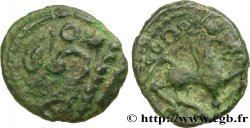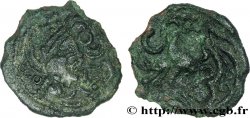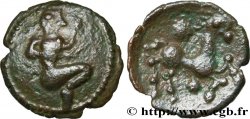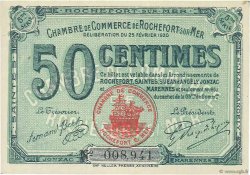Лицевая сторона
Аверс: легенда: ANÉPIGRAPHE.
Аверс: описание: Restes du personnage courant à droite, entourés d’annelets.
Обратная сторона
Реверс: легенда: ANÉPIGRAPHE.
Реверс: Описание: Cheval androcéphale libre galopant à droite ; un astre évidé entre les jambes et un autre au-dessus de la croupe.
Комментарий
Историческая справка
GALLIA BELGICA - BELLOVACI (Area of Beauvais)
(2nd - 1st century BC)
The Bellovaques, people of Belgian Gaul, occupied the current department of Oise. Their neighbors were the Parisii, the Véliocasses, the Calètes, the Ambiens and the Suessions.. Caesar (BG. VII. 59) considers the Bellovaci as the "most valiant people in all of Gaul". Before the Gallic Wars, the Bellovaci had been allies of the Aedui. In 57 BC. -VS. , they were the architects of the uprising of the Belgian peoples, provided a contingent of sixty thousand warriors to the coalition, but were defeated and found refuge on their oppidum of Bratuspantium. In 52 BC. -VS. , they had promised a contingent of ten thousand men for the relief army. They recanted, claiming to fight the Romans alone. Finally, at the prayer of Commius, they gave two thousand men to the coalition. The following year, in 51 BC. -VS. , they took for the last time the head of a revolt of the Belgian people. Corréos, Bellovaque chief, led the sedition in order to fight the Romans with the Atrébates, the Ambiens, the Aulerques Éburovices, the Calètes and the Véliocasses. With the atrebate Commios, Correos met the Roman armies on the borders of the Bellovaci and Suession countries.. Correos was killed, which put an end to hostilities definitively.. The main oppidum of the Bellovaci was Bratuspantium which is difficult to identify with certainty with the Roman city of Caesaromagus (Beauvais). Caesar. (BG. II, 4, 5, 10, 13, 14; V, 46; VII, 59, 75, 90; viii, 6, 7, 12, 14-17, 20-23, 38). Strabo (G. IV, 3-5). Pliny (HN. IV, 106). Ptolemy (G. II, 9). Kruta: 68, 351.









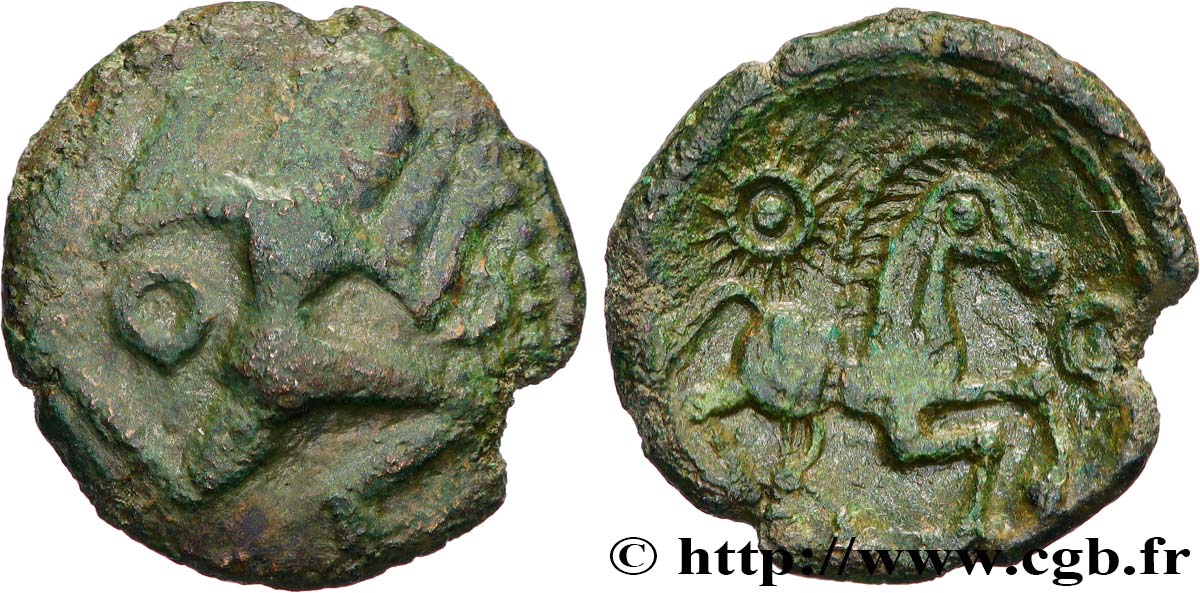
 Cообщить об ошибке
Cообщить об ошибке Распечатать страницу
Распечатать страницу Отправить мой выбор
Отправить мой выбор Задать вопрос
Задать вопрос Consign / sell
Consign / sell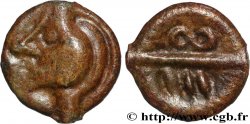
 Информация
Информация
